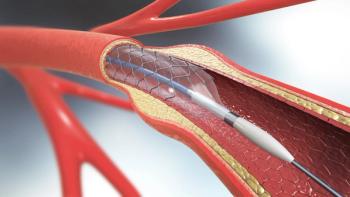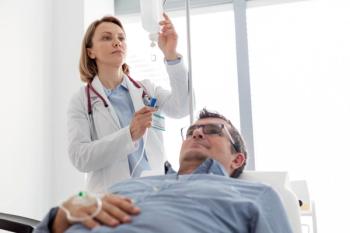
Telehealth and Cancer Care During COVID-19
Steve D'Amato, BScPharm, CEO of New England Cancer Specialists, discusses how the COVID-19 pandemic has affected cancer care.
Kristen Crossley: Hi, I'm Kristen Crossley, managing editor of Pharmacy Times. I am here with Steve D'Amato, a pharmacist and CEO of New England Cancer Specialists. Welcome, Steve.
Steve D’Amato, BScPharm: Hi, Kristen, how are you?
Kristen Crossley: Good, good. So, I understand the Virtual Community Oncology Conference was recently hosted by [the Community Oncology Alliance], and during the conference you were part of a discussion about cancer versus COVID-19 that focused on what we've learned so far during this pandemic. During that discussion you mentioned some operational changes implemented to keep staff and patients safe. Can you elaborate on what some of those operational changes would be and why they were important?
Steve D’Amato, BScPharm: Sure. Well, our journey really started at the beginning of March and, unfortunately, at that time we had to close one of our clinic sites. We have three clinic sites in southern Maine, and in the very early part of March we had a staff member who turned out to be COVID-positive who was working in the treatment room and also in the clinic—really throughout the whole clinic. And this is before we changed all of our policies and procedures, so in working with the CDC in Maine we elected to close that facility and quarantine all of the employees in that facility for 14 days, and we also had to contact all of the patients who came through that clinic site to make them aware and also make sure that they underwent monitoring and were aware of their risk. So, that was something you really don't want to have to encounter again, and so that leads to a lot of operational changes in policies and procedures to keep your staff and patients safe. Right after that our leadership team worked, really, around the clock to really transform our practice into a safe place for patients and for staff.
Kristen Crossley: Can you tell me a little bit about why it's so important to have a strong leadership team and what are some of the actions that leaders can take to strengthen their team and their work environment for the staff during this pandemic?
Steve D’Amato: So, when this journey started—the beginning of March for us—the leadership
team was extremely important. Our leadership team is fairly large. We have 18 people on this leadership team, and we elected to meet via Zoom twice a day starting in the beginning of March as we really transformed our practice in multiple ways. As you know, we certainly converted a lot of staff to work remotely—about 50% of our staff has been transitioned to that. So, certainly that required a lot of IT infrastructure to make that happen, but back to leadership. Our leadership team represents every facet of our organization and through these twice-daily Zoom meetings we were able to work as a cohesive team. So, again the leadership team continues to meet—now we meet daily and beginning in May we'll go to two or three times a week. But we've found that the cohesiveness of the leadership team was enhanced through these so meetings well that I’ve actually done comprehensive staff meetings now through Zoom that encompass all 4 of my sites, and this has been really well received by the staff and something that we'll continue to do moving forward.
Kristen Crossley: Okay, so telehealth has been brought to the forefront of patient care in recent weeks, with social distancing creating an immediate need for remote communication. How can telehealth services be optimized for patients with cancer and is there an impact on telehealth for those in oncology pharmacy?
Steve D’Amato, BScPharm: So, we implemented telehealth services within 4 days. They were something that's been on our radar for a long time, but COVID-19 accelerated that for us and we were able to implement it in 4 days—not without hiccups. So, certainly, all the practices and institutions that have used telehealth during this time have had a learning curve if they haven't done it before, and so the communication tools are important, security is important. As you learn
through Zoom and other methods, security has been raised as a concern and certainly people are addressing that. But also, operationally, how do you implement telehealth with your patients who haven't had this experience before? In Maine, we're a rural state, a lot of patients may not have, you know, the connectivity or devices they need, [but] a lot do. We were able to wade through that, but it took a lot of work on the back end of our staff communicating with patients, setting up the telehealth visits, working with the providers and the patients. And that's what we've learned, that, you know, there are other tools out there that we're exploring that we need to enhance telehealth services, and by that I mean software programs that can really facilitate the meeting between the patient and the provider and take some of that back work off of the staff to make it a more seamless encounter. The other thing is the type of visits that you use for telehealth, and certainly the regulations prior to COVID-19 may have hindered a lot of telehealth efforts due to the regulations. With those regulations being relaxed and the reimbursement being brought up to office reimbursement, it made it a more amenable way to facilitate patient visits, keep patients on track, and stay connected to patients that needed to be connected to the practice. So, I think moving forward, telehealth will always be with us. It'll be a matter of reimbursement and regulations around telehealth—will those change post-COVID-19 or not, and what will the private payers do around telehealth. So, right now as we've submitted claims for those services, we'll see how the private payers react to this. And certainly, what we'd like to see, and I'm sure COA will promote this, this concordance between Medicare and the private payers, you know, around the regulations and reimbursement for telehealth, because I think what people have found is it's a very valuable tool to use and connect with patients. But there may be types of visits that aren't amenable to telehealth and they'll require that in-person touch, so those are things I think that organizations and practices, you know, will tease out as we move through this.
Kristen Crossley: Are more payers willing to pay for telehealth services during this? Are you seeing a shift during the pandemic?
Steve D’Amato, BScPharm: So, we've had some, yes, that are paying and, you know, I can't speak to all of them because I'm not really in the finance office to see that, and this is new. A lot of the claims have just gone out recently, and so we're waiting to get payment from a lot of those private areas and so we'll have to work with them. And we have, you know, good relationships with most of them to work through this and really show the benefits of telehealth during COVID-19. I don't think anyone can dispute that telehealth has been instrumental in keeping patients on track and keeping them connected with their providers.
Kristen Crossley: Okay, in terms of cancer care and COVID-19, what else should health care providers and pharmacists know?
Steve D’Amato, BScCPharm: Well, I think, really, it's the procedures and precautions that you set for your institutional practice, and what my providers and patients and staff have told me is they feel safer coming into our work environment than they do going into the grocery store and other places, and that's because we have stringent screening procedures in place. You know, everyone's masking—all the staff, all the patients—we take all staff temperatures every day, we have really stringent screening processes for patients coming into the practice. So, I think all of
those things and having the collective eye over your organization—again, that speaks to leadership and communication, you know, to make sure that you're keeping everyone safe. And, you know, cancer doesn't take a day off and so we've prepared our staff in our organization. And if we have to deal with a COVID-patient that needs treatment—fortunately, we haven't had to deal with that yet—but you have to be prepared in case that happens. So, you have to have a dedicated area with the appropriate PPE where patients can be dealt with in a safe and prudent manner along with the staff.
Kristen Crossley: Okay, thank you. Switching gears a little bit, what is the value of a pharmacist to a cancer care team?
Steve D’Amato: So, I can't overstate the value of a pharmacist of the cancer care team. When I joined New England Cancer Specialists, I was the only pharmacist and that was the role I played and now I'm more administrative, but that led me to hire three more pharmacists. So, I have three other pharmacists within the practice that perform a wide variety of duties. So, from contracting to medically integrated dispensing to being experts and the regimens and clinical care, the pharmacy team is really integral in the operations of our practice. They're part of our leadership team and, really, the physicians and other staff depend on the pharmacy staff to provide them with education, information, troubleshooting, you name it. The pharmacists now, as you know, the roles of pharmacy have expanded over time. It's no longer, you know, just working with dispensing solely or working on the front lines of injectable therapies and delivery, [but] it's become more than that now. So, not only do we have those duties but really keeping abreast of regulatory activities, advocacy activities, being informed on everything in oncology. And, as you know, the new treatments and the amount of new treatments that we see on a daily basis really requires experts to manage that, manage your formulary, manage your contracts, and provide the educational information to you, provide it to staff to make sure that patients are treated safely and appropriately. So, that's just scratching the surface. Pharmacy is really involved in every facet now about practice operations, so I'm very proud of my pharmacy team, I rely on them and empower them, really, to do what they think is right for the practice and for our patients.
Kristen Crossley: Okay, well thank you, Steve, for your time. We really appreciate it.
Newsletter
Stay informed on drug updates, treatment guidelines, and pharmacy practice trends—subscribe to Pharmacy Times for weekly clinical insights.






































































































































































































